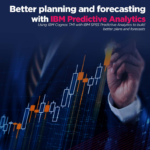
Visual Analytics
If I had a dollar for every time I was asked to design a dashboard, I would be a very rich person by now.
The truth of the matter is, although managers and decision makers are drawn to dashboards, they are seldomely used to deliver break-through insights, analysis and decision making.
Many dashboards suffer from similar problems, including:
What has become clear is that simply visualising information is no longer enough. What is needed are new tools and techniques that combine data visualisation, data management, business analytics, data mining and human centric design … and here it is, Visual Analytics.
What is Visual Analytics?
Visual Analytics (VA), is the development of interactive analytical applications to improve business analysis, discover hidden insights and improve decision making.
The idea behind Visual Analytics is to combine the strengths of automatic business analytics with the visual perception and analysis capabilities of the human user. It uses visualisations, human centric design and data analysis techniques to help employees uncover insights from complex and dynamic information, especially in big data sets.
Visual Analytics can be summed up by the following mantra:
1. Initial Analysis
2. Highlight the Critical & Important
3. Explore, Filter & Zoom
4. Drill to Details on Demand
Visual Analytics is the next evolutionary step for digital dashboards and data visualisation techniques, to provide organisations a competitive advantage, by using the visual aspects of its human and computer assets to their full potential.
How will Visual Analytics change the way you do business?
Visual Analytics has the power to transform the way you and your employees conduct its business.
Some of the biggest use cases for Visual Analytics include:
Industries
Visual Analytics is not a new area of scientific research; rather it has already been identified as a competitive advantage by those industries and business functions that have to deal with significant amounts of data. These include:



